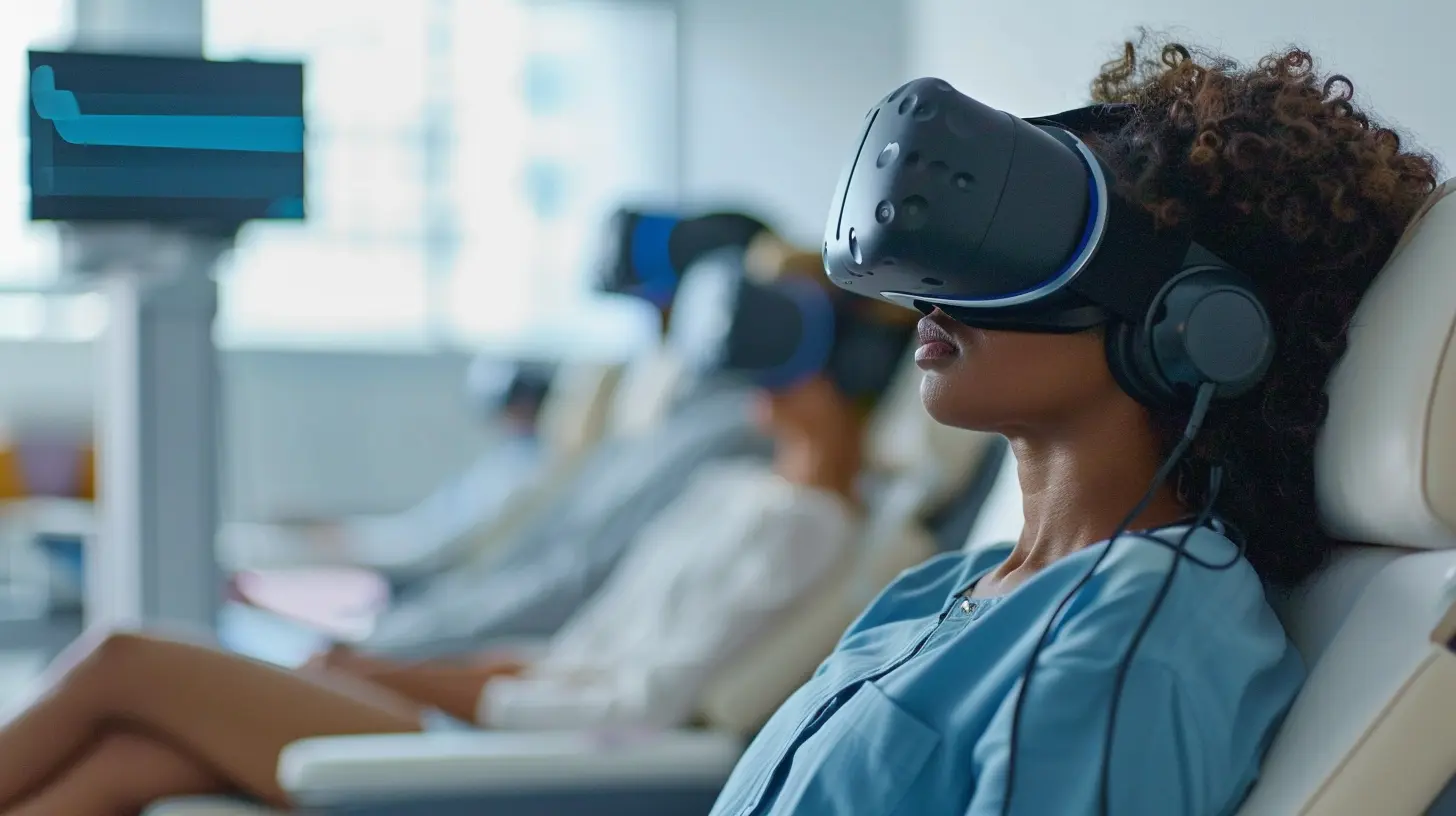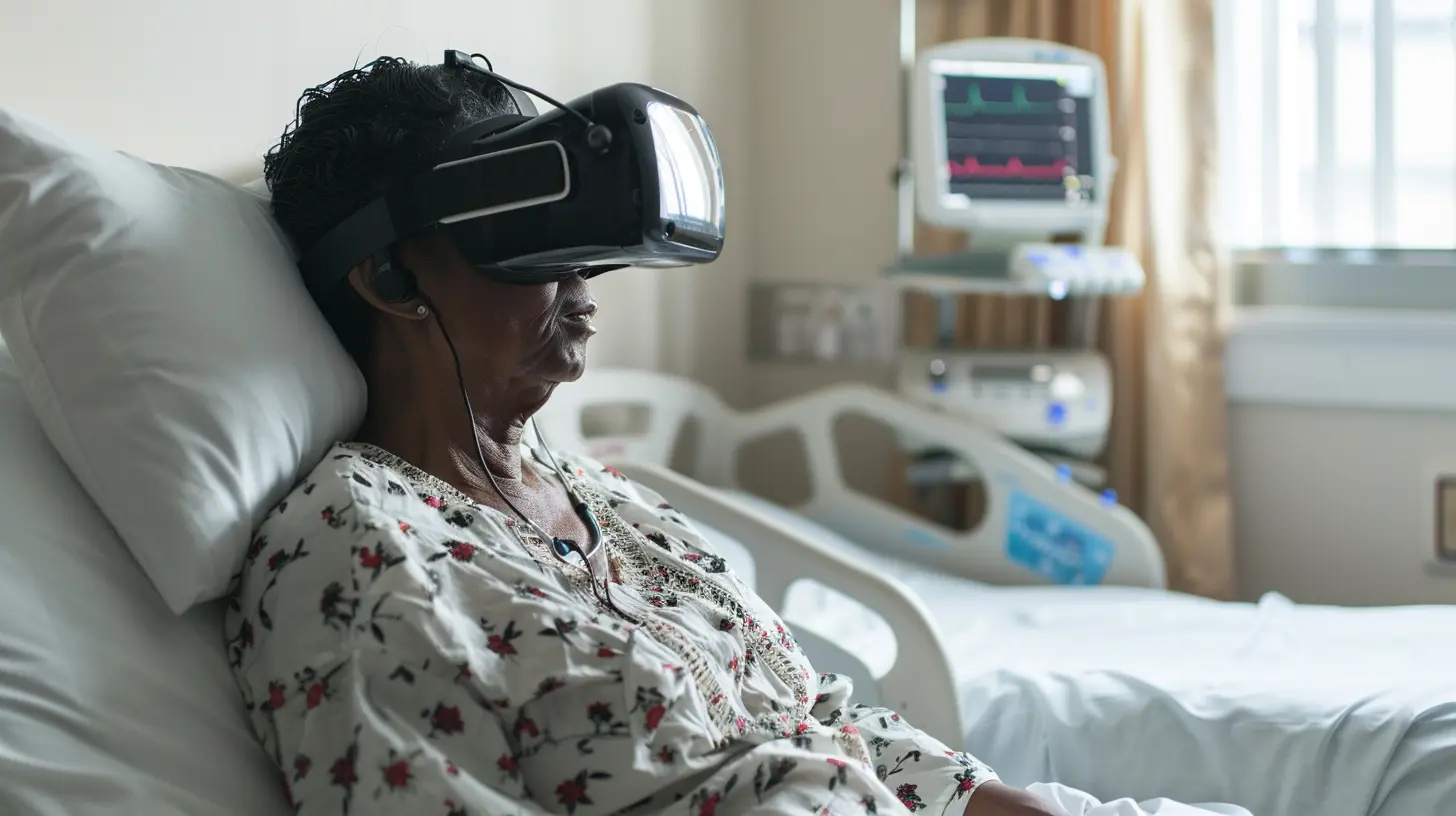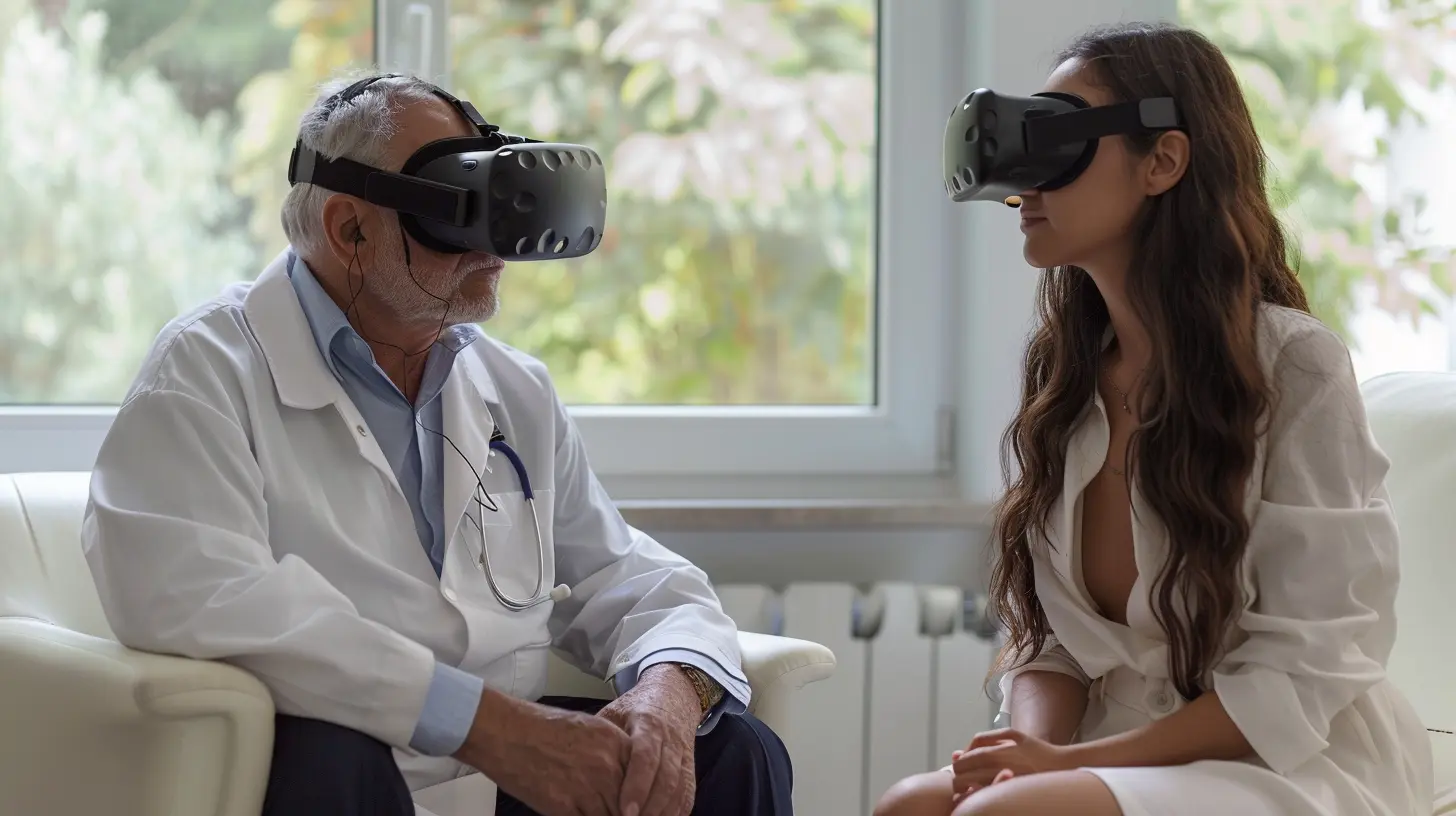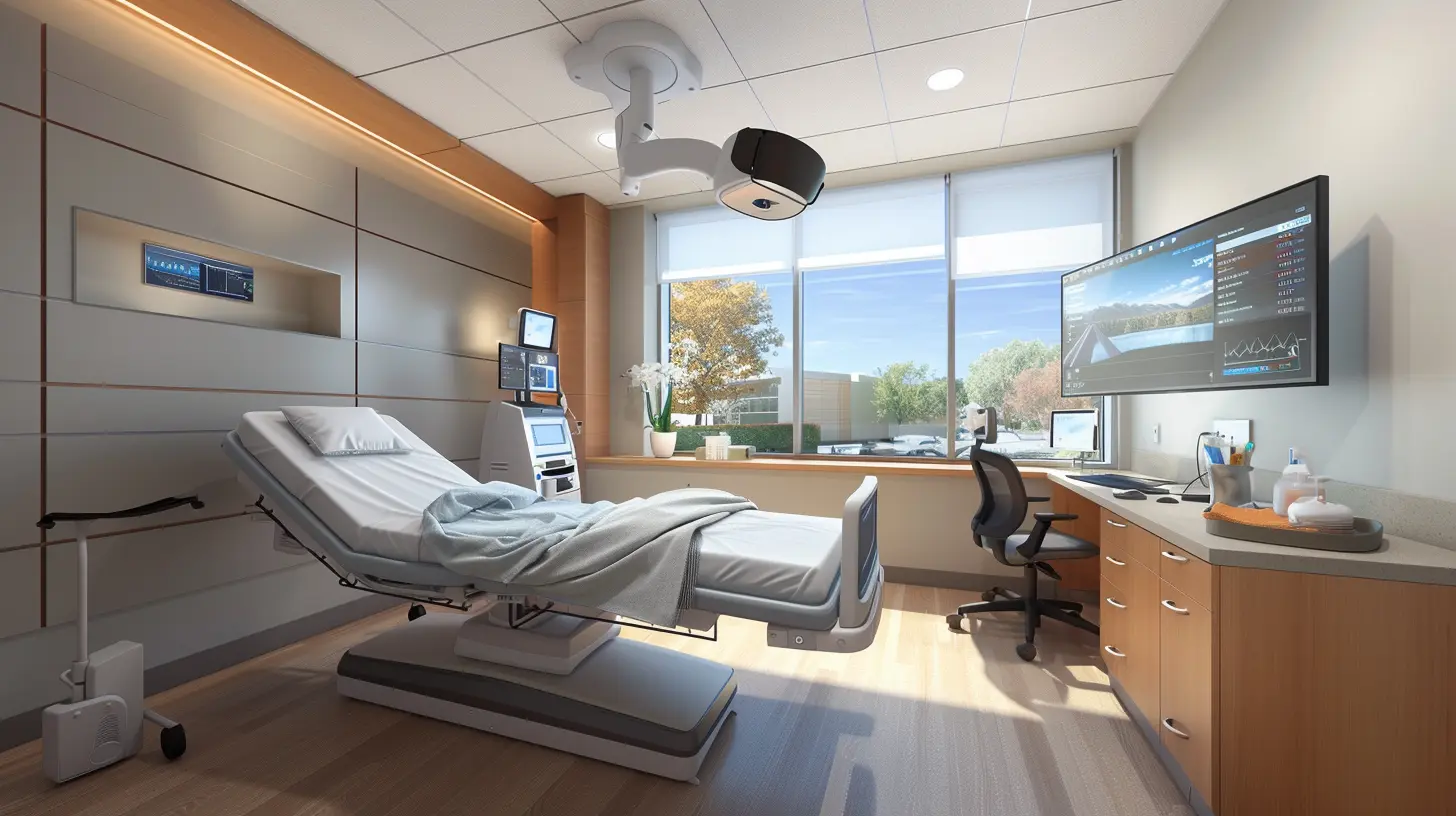The Role of Virtual Reality in Healthcare and Therapy
3 August 2025
What if slipping on a virtual reality headset could help you overcome a lifelong fear, manage chronic pain, or even aid in recovery after a stroke? Sounds like science fiction, right? But in today’s fast-paced and tech-obsessed world, it’s actually happening. Virtual reality (VR) is no longer just for gamers and tech geeks—it's finding its way into hospital rooms, therapy offices, and operating tables around the globe.
So, let’s get real and dive into how VR is shaking things up in the world of healthcare and therapy. Whether you’re a tech enthusiast, healthcare professional, or simply someone curious about how the future is unfolding, this one’s for you.
What Is Virtual Reality, Really?
Before we go too deep, let’s make sure we’re on the same page. Virtual reality is a computer-generated simulation of a three-dimensional environment that you can interact with in a seemingly real way. You usually need a special headset and sometimes gloves or hand controllers to immerse yourself fully into this digital world.Now, you might be thinking, “Okay, cool, but how does this help with health and therapy?" Let’s break it down.
VR In Healthcare: Not Just a Fancy Gadget
When you think about hospitals and clinics, you probably don’t imagine doctors walking around with headsets, right? But that’s changing quickly, and for good reason.1. Pain Management Without Pills
Pain is one of the most common reasons people go to the doctor. From chronic back pain to post-surgery discomfort, managing it is a big deal. Traditionally, pain relief has meant popping pills. But with the opioid crisis putting pressure on the medical community, alternatives are in high demand.Enter VR.
Using immersive VR environments—like floating down a peaceful river or wandering through a sunny meadow—patients can distract their brain from the pain signals. It’s kind of like how listening to your favorite song can make you forget about a stubbed toe. Some hospitals are already using VR for burn victims during wound care, which can be incredibly painful, and the results are impressive.
2. Surgical Precision with VR Training
No one wants to think about a student practicing surgery for the first time on a real human body. That’s where VR comes in as a game-changer. Surgeons-in-training can now practice procedures in realistic, 3D virtual rooms. This not only hones their skills but also reduces errors when the stakes are high.Some VR platforms even offer haptic feedback—meaning the user can "feel" resistance, like when cutting into tissue—which makes the experience even more lifelike. It’s kind of like flight simulators, but for surgery.
3. Physical Rehabilitation Gets an Upgrade
Physical therapy often requires repetitive, boring exercises. And let’s face it, that can be hard to stick with over time. With VR, these exercises can be turned into games or adventures—like popping virtual balloons with your injured arm or walking through a forest trail to regain balance.This makes the process more engaging and, in many cases, speeds up recovery. Plus, it offers real-time feedback that helps therapists track progress better than ever.
VR In Mental Health: A New Frontier
It’s no secret that mental health is just as important as physical health. Yet, finding effective, accessible treatments can be tricky. This is where VR absolutely shines.4. Treating Anxiety and PTSD Through Exposure Therapy
Exposure therapy is one of the most effective ways to treat phobias and post-traumatic stress disorder (PTSD). But safely recreating some situations (like warzones for veterans, or a fear of flying) isn't exactly easy.VR makes it possible.
Therapists can guide patients through controlled virtual scenarios that mimic their triggers. Over time, repeated exposure helps lessen the fear response. And because it’s all virtual, it’s safer and more controlled than attempting this in the real world.
5. Helping With Social Anxiety and Autism
For people with autism or severe social anxiety, engaging in social situations can feel overwhelming. VR provides a safe space to practice interactions, like ordering food at a restaurant or attending a job interview. It’s basically like a rehearsal for real life, without the fear of messing up.The best part? These scenarios can be tailored to each individual’s needs. It’s customizable, private, and repeatable.
6. Meditation and Mindfulness in Virtual Spaces
Sometimes, life gets noisy—literally and figuratively. Wouldn’t it be great to escape to a quiet mountaintop or a seaside cliff for some peace? With VR, you totally can.VR apps focused on relaxation and meditation are gaining popularity. These digital getaways help lower stress, reduce anxiety, and even improve sleep. They provide an immersive experience that can be far more effective than just closing your eyes and "imagining" a happy place.
Real-Life Success Stories
Let’s talk about some real people who’ve benefited from VR in healthcare and therapy.- Children undergoing chemotherapy: Several pediatric hospitals use VR to distract kids during long and painful treatments. Kids can swim with dolphins or visit outer space while chemotherapy is administered.
- Veterans with PTSD: Programs like Bravemind (developed at USC) have successfully helped military personnel confront and process traumatic experiences from combat zones.
- Stroke survivors: Rehab centers are using VR to help patients relearn motor skills by engaging in interactive exercises that mimic daily tasks.
These aren't just cool experiments—they're changing lives.
The Tech Behind the Healing
Behind the scenes, this isn’t just about fancy goggles. VR systems used in healthcare are often powered by sophisticated software that tracks eye movement, reacts to user inputs, and adapts to the patient’s needs in real-time.Add in artificial intelligence and machine learning, and suddenly you’ve got a therapy session that gets smarter and more personalized every time you use it.
Some companies leading the charge in VR healthcare include:
- AppliedVR: Specializes in pain management solutions.
- MindMaze: Focuses on neurorehabilitation.
- XRHealth: Offers a platform for therapeutic VR applications managed by doctors remotely.
Challenges to Consider
Okay, let’s be real—not everything is perfect. Like any new tech, VR in healthcare has its hurdles.- Cost: High-quality VR systems aren’t cheap. Not all clinics or hospitals can afford to implement them.
- Accessibility: Not everyone has access to the tech or internet speed required, especially in rural or underfunded areas.
- Motion Sickness: Some people experience dizziness or nausea when using VR. That’s not ideal when you’re already dealing with medical issues.
- Lack of Regulation: Since this tech is relatively new, there aren’t a ton of standardized guidelines yet.
But despite these bumps in the road, the benefits are just too significant to ignore.
What's Next for VR in Healthcare?
So, what does the future hold? Honestly, the sky’s the limit.We’re already seeing the beginnings of telehealth merging with VR, where you can "meet" with your doctor in a virtual clinic. Imagine not just chatting over a video call, but sitting in a lifelike digital room with your healthcare provider.
There's also talk of using VR for:
- Managing dementia and Alzheimer’s through memory recall environments.
- Helping patients understand complex surgeries with 3D simulations before going under the knife.
- Offering virtual group therapy sessions in calming, imagined environments.
This tech is only going to get better, more affordable, and more adaptable. Think of it as the next big leap, just like how MRIs or robotic-assisted surgeries transformed the medical field a few decades ago.
Final Thoughts: The Human Side of Virtual Reality
At the end of the day, virtual reality is just a tool—but what a powerful tool it is! It’s not about replacing doctors or therapists. It’s about giving them a high-tech sidekick to provide better, more engaging, and sometimes even more compassionate care.As technology races forward, it's easy to forget the human side of healthcare: connection, empathy, and trust. VR, when used wisely, can actually enhance those very values. It opens doors, breaks down barriers, and offers new hope to people who may have felt stuck in their healing journey.
So next time you see someone wearing a VR headset, don’t just assume they’re playing a game. They might just be fighting pain, facing fears, or healing from trauma—in the most futuristic way possible.
all images in this post were generated using AI tools
Category:
Tech NewsAuthor:

Gabriel Sullivan
Discussion
rate this article
1 comments
Zephira Castillo
Great article! The potential of virtual reality in healthcare and therapy is truly transformative. It’s fascinating to see how immersive technologies can enhance patient experiences and outcomes. I look forward to witnessing further advancements in this field and their impact on mental health treatment and rehabilitation.
August 14, 2025 at 4:02 AM

Gabriel Sullivan
Thank you for your kind words! I'm glad you found the article insightful. The advancements in virtual reality truly have the potential to revolutionize healthcare and therapy.


